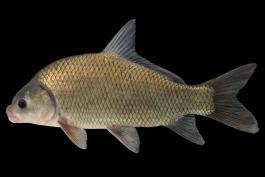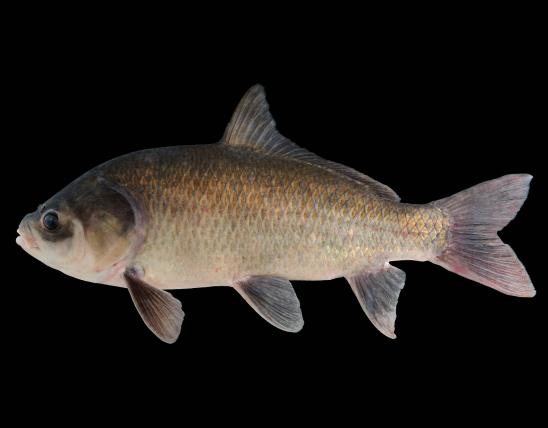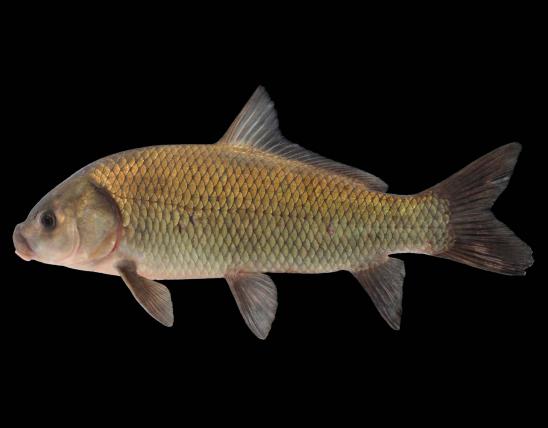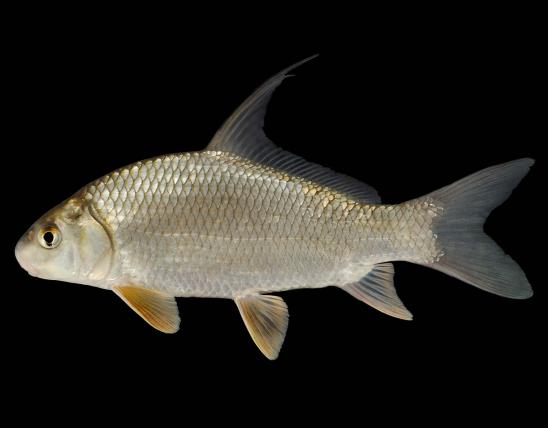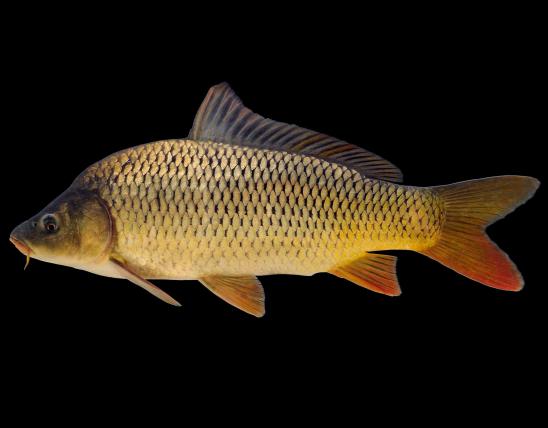
Like other buffalofishes, the smallmouth buffalo is a dark-colored sucker with a deep body and a long, sickle-shaped dorsal fin. The eyes are small and closer to the tip of the snout than to the rear margin of the gill cover. The lower fins have much dusky pigment. Coloration is generally lighter than that of the bigmouth buffalo; larger individuals are often a rather uniform slate-gray, without coppery or greenish reflections.
Similar species: The smallmouth buffalo is similar to the bigmouth buffalo but has a smaller, nearly horizontal mouth and has thicker, more strongly grooved lips. The front of the upper lip is well below the level of the lower margin of the eye. The length of the upper jaw is less than the diameter of the eye. The body is deeper and thinner than in other buffalofishes, its depth going about 2.2 to 2.8 times into the standard length and its width less than the distance from the tip of the snout to the upper end of the gill opening. The forward part of the back is usually strongly keeled.
Length: commonly 15–30 inches; weight: commonly 2.2–17.6 pounds. Reportedly the smallest of the buffalofishes, attaining a maximum weight of about 40 pounds.
Nearly as common and widespread in Missouri as the bigmouth buffalo. The most abundant buffalofish in the Mississippi River, the Osage River, the larger prairie streams of northeast Missouri, and the lowland streams and ditches of southeast Missouri (the Bootheel), and in large Ozark reservoirs.
Habitat and Conservation
Occurs in rivers, large streams, and ditches, and in large Ozark reservoirs. The smallmouth buffalo seems to prefer clearer water than the bigmouth buffalo and is found less often in strong currents than the black buffalo.
Food
An opportunistic feeder, consuming organisms according to their abundance in the environment. The smallmouth buffalo is a bottom feeder, eating crustaceans, insect larvae, and algae, and also consuming quantities of detritus and sand.
Life Cycle
Apparently has a protracted spawning season in late spring and early summer. Females broadcast eggs over a wide variety of substrates in 4–20 feet of water. The eggs are left to develop without parental care. Growth, like that of the bigmouth buffalo, is steady and rapid for a number of years, with even 13-year-old individuals documented as still growing rapidly.
Human Connections
Buffalofishes are considered fine food fishes.
Seldom taken on a hook and line; most are caught with trammel nets and other commercial fishing gear.
As a group, the buffalofishes rank second in importance to carp in the commercial fishery of the Mississippi and Missouri rivers.
Buffalofishes are well-suited for artificial propagation, and in some southern states they have been raised in rotation with rice. Pond propagation is another alternative.
Ecosystem Connections
Suckers are one of the dominant groups of large fishes in Missouri waters. In many streams, their total poundage may exceed that of all other fishes combined. Each kind of sucker has its own particular habitat preference.
The fleshy, protrusile lips of suckers make them perfectly equipped for sucking up aquatic invertebrates from the bottom.
Small suckers, including the eggs and young of the smallmouth buffalo, are an important food source for other animals, including game fishes.

